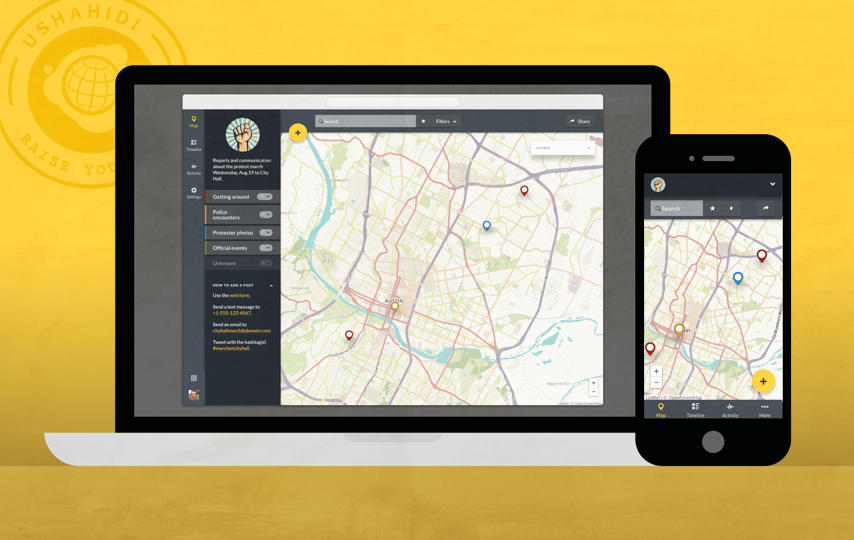Ushahidi, the Kenyan-born tech company that builds open source software for the advocacy, development, and humanitarian response communities, released major design improvements, key features, and updated plans today. The improvements include new map, timeline, and charting tools, making the work of collecting, managing, and responding to data faster and more immersive.

“We believe data should not be dehumanized. It should not be difficult to get, and it should not be difficult to understand,” said Daudi Were, Ushahidi chief executive officer. “These are the problems our users tell us they have. So we design and build our platform to solve these challenges.”
Were said Ushahidi helps its users read the crowd to get the whole story -- not just the data.
The major design improvements bring clarity to the data and storytelling within Ushahidi deployments, and are the product of six months of research that included more than 100 users helping to design a streamlined workflow for their teams. That flow relies heavily on new “modes” in Ushahidi, which offer more focused interaction with the platform’s most popular visualizations: Map, Timeline, and “Activity” charts.
The dramatic changes to Ushahidi today include new features, as well, including support for uploading images to posts and exporting data to CSV, so users can analyse their data outside of their deployment.
“After we launched a re-imagined Ushahidi in October 2015, we spent the next six months listening,” Ushahidi Creative Director Brandon Rosage said. “We wanted to stop guessing who the typical Ushahidi user is, and how they needed the software to work. Instead, we asked them to tell us. They helped us assemble simple prototypes and conduct usability studies. And by April 2016, more than 100 users had worked directly with Ushahidi staff to shape what they felt were the most pressing ideas to improve Ushahidi.”
Anyone can get started with the new version of Ushahidi for free, or upgrade their current deployment with additional features. The Open Source code that powers the latest version of Ushahidi is available to download at GitHub.
Ushahidi improved and lowered the cost of its plans, as well. The “Surveyor” plan now offers storage for unlimited posts and surveys at the reduced price of USD 99 per month. Existing “Surveyor” deployments will receive these benefits automatically. Grassroots organizations continue to be eligible for free “Surveyor” and “Responder” plans.
To learn more about Ushahidi, including a complete list of features included in each plan, visit ushahidi.com.